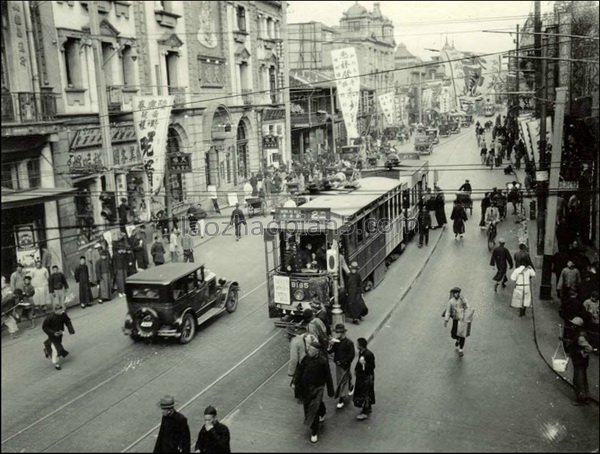Period:Ming dynasty Production date:1566 (dated)
Materials:earthenware
Technique:moulded, glazed,
Subjects:buddha flaming jewel
Dimensions:Height: 37.70 centimetres
Description:
Architectural fitting in the form of a seated Buddha with ‘sancai’ glaze and incised inscription. This architectural fitting is modelled as an image of the Buddha, seated on a lotus-seed-pod throne, with a flaming mandala behind. He is dressed in an underskirt tied at the waist and his bare torso is exposed beneath a long robe, draped over his shoulders. In addition he wears a crown with an incised lotus design, top knot and streamers down the back. His right hand is raised but broken and the left hand holds a small pearl. Attached to the back of the figure is a rectangular tube raised at the back to the same height as the mandala. It is incised with a crudely written devotive inscription in Chinese characters on all three sides which are read vertically from top to bottom. This gives the time of manufacture of the figure, the name of the place where it was installed, a dedication by the donor and details of the craftsman.
IMG
![图片[1]-figure BM-1927-1116.1-China Archive](https://chinaarchive.net/Ming dynasty/43/mid_00272313_001.jpg)
Comments:Harrison-Hall 2001:A circular bronze Chinese coin with the ubiquitous square hole in the centre was found with the figure.This architectural fitting was made in 1566 in the same county as BM 1988.0728.1, Yangcheng county, southern Shanxi province, on a tributary of the Qin River. Tile-work businesses in southern Shanxi province employed the largest number of workers, including artisans from neighbouring Henan, Shaanxi and Hebei province. To date 132 kiln sites have been identified in Shanxi; this one was situated in Tongluo district. Increased wealth among the middle classes in the sixteenth and seventeenth centuries led to a massive investment in building projects and a refurbishment of family ancestral halls. Wu Shangbin is honoured in the inscription with the title ‘gong de shi zu’, a title bestowed on a generous benefactor who supports Buddhism by acts of charity. He was probably the head of a family clan living in Wu village in Shanxi. Craftsmen’s names are rarely recorded but here the figure is marked with Qiao Shigui’s name.In the fifteenth century modest shrines were built to immediate forebears, but by the sixteenth century more elaborate temples were constructed to original founding ancestors of lineages and guardianship of ancestral cults was consigned to Buddhist rather than Daoist temples.
Materials:earthenware
Technique:moulded, glazed,
Subjects:buddha flaming jewel
Dimensions:Height: 37.70 centimetres
Description:
Architectural fitting in the form of a seated Buddha with ‘sancai’ glaze and incised inscription. This architectural fitting is modelled as an image of the Buddha, seated on a lotus-seed-pod throne, with a flaming mandala behind. He is dressed in an underskirt tied at the waist and his bare torso is exposed beneath a long robe, draped over his shoulders. In addition he wears a crown with an incised lotus design, top knot and streamers down the back. His right hand is raised but broken and the left hand holds a small pearl. Attached to the back of the figure is a rectangular tube raised at the back to the same height as the mandala. It is incised with a crudely written devotive inscription in Chinese characters on all three sides which are read vertically from top to bottom. This gives the time of manufacture of the figure, the name of the place where it was installed, a dedication by the donor and details of the craftsman.
IMG
![图片[1]-figure BM-1927-1116.1-China Archive](https://chinaarchive.net/Ming dynasty/43/mid_00272313_001.jpg)
Comments:Harrison-Hall 2001:A circular bronze Chinese coin with the ubiquitous square hole in the centre was found with the figure.This architectural fitting was made in 1566 in the same county as BM 1988.0728.1, Yangcheng county, southern Shanxi province, on a tributary of the Qin River. Tile-work businesses in southern Shanxi province employed the largest number of workers, including artisans from neighbouring Henan, Shaanxi and Hebei province. To date 132 kiln sites have been identified in Shanxi; this one was situated in Tongluo district. Increased wealth among the middle classes in the sixteenth and seventeenth centuries led to a massive investment in building projects and a refurbishment of family ancestral halls. Wu Shangbin is honoured in the inscription with the title ‘gong de shi zu’, a title bestowed on a generous benefactor who supports Buddhism by acts of charity. He was probably the head of a family clan living in Wu village in Shanxi. Craftsmen’s names are rarely recorded but here the figure is marked with Qiao Shigui’s name.In the fifteenth century modest shrines were built to immediate forebears, but by the sixteenth century more elaborate temples were constructed to original founding ancestors of lineages and guardianship of ancestral cults was consigned to Buddhist rather than Daoist temples.
© Copyright
The copyright of the article belongs to the author, please keep the original link for reprinting.
THE END




![[Qing Dynasty] British female painter—Elizabeth Keith, using woodblock prints to record China from the late Qing Dynasty to the early Republic of China—1915-China Archive](https://chinaarchive.net/wp-content/uploads/2022/11/image-191x300.png)
